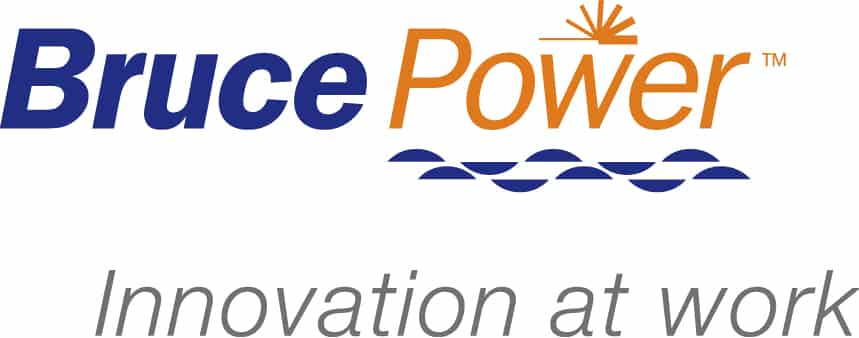Derivative Pricing Using ESG
The integration of Environmental, Social, and Governance (ESG) criteria into derivative pricing is an evolving aspect of financial markets. This approach reflects the growing recognition that ESG factors can have significant impacts on the financial performance and risk profile of investments. Derivatives, which are financial contracts whose value is derived from an underlying asset or group of assets, are increasingly being adapted to incorporate ESG considerations, leading to the development of ESG derivatives. This article explores the various types of ESG derivatives, their pricing mechanisms, and the regulatory landscape shaping their development.
Types of ESG Derivatives
Sustainability-Linked Derivatives (SLDs): SLDs are traditional derivatives such as interest rate swaps, cross-currency swaps, or forwards, but with an added ESG component. This component ties the derivative’s performance or pricing to the achievement of specific ESG targets. For example, a company might enter into an interest rate swap where the interest rate is adjusted based on the company’s progress in meeting predefined sustainability goals, such as reducing carbon emissions or increasing renewable energy capacity.
Credit Derivatives: ESG-related credit derivatives, like Credit Default Swaps (CDS), are used to hedge against the credit risk of companies based on their ESG performance. These derivatives can provide protection against financial losses due to ESG-related events, such as environmental disasters or failures to meet sustainability targets. For instance, the iTraxx MSCI ESG Screened Europe Index is a CDS index that includes companies screened for their ESG performance, offering investors a way to manage ESG-related credit risk.
Catastrophe Derivatives: These derivatives are designed to transfer the financial risk associated with natural disasters, which are becoming more frequent and severe due to climate change. Catastrophe bonds and swaps, for example, provide payouts based on the occurrence of specific catastrophic events, thereby offering financial protection against such risks.
ESG Index Derivatives: Exchange-traded derivatives, such as futures and options on ESG indexes, allow investors to hedge or gain exposure to ESG-focused companies. These derivatives are linked to indices that track the performance of companies meeting certain ESG criteria, such as the CBOE S&P 500 ESG Index options or the EURO STOXX 50 Low Carbon Index futures.
Pricing Mechanisms
The pricing of ESG derivatives incorporates traditional valuation models with adjustments for ESG factors. The key challenge is to quantify the impact of ESG criteria on the financial performance and risk profile of the underlying asset. For SLDs, this often involves setting key performance indicators (KPIs) related to ESG goals, such as emission reductions or social impact metrics. The derivative’s cash flows or spread adjustments are then linked to the achievement of these KPIs.
Credit derivatives pricing, on the other hand, may involve assessing the creditworthiness of the underlying entity based on its ESG ratings. Research suggests that companies with strong ESG performance tend to have lower credit risks and potentially higher returns, which can influence the premium or discount applied to the CDS contracts.
For catastrophe derivatives, pricing models need to account for the probability and impact of specific natural disasters. These models use historical data and climate projections to estimate the likelihood of events such as hurricanes or earthquakes, which then determine the cost of the derivative.
Regulatory Landscape
The regulatory environment for ESG derivatives is still developing. In the European Union, regulations like the Sustainable Finance Disclosure Regulation (SFDR) and the revised Benchmarks Regulation are beginning to shape the use and disclosure requirements for ESG derivatives. The SFDR, for instance, requires financial market participants to disclose how they integrate ESG risks into their investment decisions, which includes the use of derivatives.
In the United States, regulatory efforts have been more focused on disclosure and transparency. The Securities and Exchange Commission (SEC) and the Commodity Futures Trading Commission (CFTC) have emphasized the importance of clear and accurate ESG disclosures to prevent greenwashing, which is the practice of making misleading claims about the environmental benefits of financial products.
Globally, the International Swaps and Derivatives Association (ISDA) has been working on standardizing documentation for ESG derivatives to ensure clarity and consistency in how these instruments are defined and traded. This includes developing guidelines for setting and measuring ESG-related KPIs in derivative contracts.
Conclusion
ESG derivatives represent a significant innovation in the financial markets, providing tools for managing the financial risks associated with ESG factors while promoting sustainable practices. As the market for these derivatives grows, continued development of pricing models, regulatory frameworks, and standardized documentation will be crucial. These advancements will help ensure that ESG derivatives effectively contribute to the global transition towards a more sustainable economy.
Bibliography
- Matheson. “ESG Derivatives: A Look at Their Use and Regulation.” Retrieved from Matheson.
- Herbert Smith Freehills. “Sustainability Linked Derivatives.” Retrieved from Herbert Smith Freehills.
- Mayer Brown. “ESG Derivatives: A Sustainable Trend.” Retrieved from Mayer Brown.
- King & Wood Mallesons (KWM). “ESG Derivatives: The Next Sustainable Finance Frontier.” Retrieved from KWM.
- Latham & Watkins LLP. “The Role of Sustainability-Linked Derivatives in Meeting Global ESG Goals.” Retrieved from Latham & Watkins LLP.
- White & Case LLP. “ESG Derivatives.” Retrieved from White & Case LLP.
Derivative Pricing Using ESG
The integration of Environmental, Social, and Governance (ESG) criteria into derivative pricing is an evolving aspect of financial markets. This approach reflects the growing recognition that ESG factors can have significant impacts on the financial performance and risk profile of investments. Derivatives, which are financial contracts whose value is derived from an underlying asset or group of assets, are increasingly being adapted to incorporate ESG considerations, leading to the development of ESG derivatives. This article explores the various types of ESG derivatives, their pricing mechanisms, and the regulatory landscape shaping their development.
Types of ESG Derivatives
Sustainability-Linked Derivatives (SLDs): SLDs are traditional derivatives such as interest rate swaps, cross-currency swaps, or forwards, but with an added ESG component. This component ties the derivative’s performance or pricing to the achievement of specific ESG targets. For example, a company might enter into an interest rate swap where the interest rate is adjusted based on the company’s progress in meeting predefined sustainability goals, such as reducing carbon emissions or increasing renewable energy capacity.
Credit Derivatives: ESG-related credit derivatives, like Credit Default Swaps (CDS), are used to hedge against the credit risk of companies based on their ESG performance. These derivatives can provide protection against financial losses due to ESG-related events, such as environmental disasters or failures to meet sustainability targets. For instance, the iTraxx MSCI ESG Screened Europe Index is a CDS index that includes companies screened for their ESG performance, offering investors a way to manage ESG-related credit risk.
Catastrophe Derivatives: These derivatives are designed to transfer the financial risk associated with natural disasters, which are becoming more frequent and severe due to climate change. Catastrophe bonds and swaps, for example, provide payouts based on the occurrence of specific catastrophic events, thereby offering financial protection against such risks.
ESG Index Derivatives: Exchange-traded derivatives, such as futures and options on ESG indexes, allow investors to hedge or gain exposure to ESG-focused companies. These derivatives are linked to indices that track the performance of companies meeting certain ESG criteria, such as the CBOE S&P 500 ESG Index options or the EURO STOXX 50 Low Carbon Index futures.
Pricing Mechanisms
The pricing of ESG derivatives incorporates traditional valuation models with adjustments for ESG factors. The key challenge is to quantify the impact of ESG criteria on the financial performance and risk profile of the underlying asset. For SLDs, this often involves setting key performance indicators (KPIs) related to ESG goals, such as emission reductions or social impact metrics. The derivative’s cash flows or spread adjustments are then linked to the achievement of these KPIs.
Credit derivatives pricing, on the other hand, may involve assessing the creditworthiness of the underlying entity based on its ESG ratings. Research suggests that companies with strong ESG performance tend to have lower credit risks and potentially higher returns, which can influence the premium or discount applied to the CDS contracts.
For catastrophe derivatives, pricing models need to account for the probability and impact of specific natural disasters. These models use historical data and climate projections to estimate the likelihood of events such as hurricanes or earthquakes, which then determine the cost of the derivative.
Regulatory Landscape
The regulatory environment for ESG derivatives is still developing. In the European Union, regulations like the Sustainable Finance Disclosure Regulation (SFDR) and the revised Benchmarks Regulation are beginning to shape the use and disclosure requirements for ESG derivatives. The SFDR, for instance, requires financial market participants to disclose how they integrate ESG risks into their investment decisions, which includes the use of derivatives.
In the United States, regulatory efforts have been more focused on disclosure and transparency. The Securities and Exchange Commission (SEC) and the Commodity Futures Trading Commission (CFTC) have emphasized the importance of clear and accurate ESG disclosures to prevent greenwashing, which is the practice of making misleading claims about the environmental benefits of financial products.
Globally, the International Swaps and Derivatives Association (ISDA) has been working on standardizing documentation for ESG derivatives to ensure clarity and consistency in how these instruments are defined and traded. This includes developing guidelines for setting and measuring ESG-related KPIs in derivative contracts.
Conclusion
ESG derivatives represent a significant innovation in the financial markets, providing tools for managing the financial risks associated with ESG factors while promoting sustainable practices. As the market for these derivatives grows, continued development of pricing models, regulatory frameworks, and standardized documentation will be crucial. These advancements will help ensure that ESG derivatives effectively contribute to the global transition towards a more sustainable economy.
Bibliography
- Matheson. “ESG Derivatives: A Look at Their Use and Regulation.” Retrieved from Matheson.
- Herbert Smith Freehills. “Sustainability Linked Derivatives.” Retrieved from Herbert Smith Freehills.
- Mayer Brown. “ESG Derivatives: A Sustainable Trend.” Retrieved from Mayer Brown.
- King & Wood Mallesons (KWM). “ESG Derivatives: The Next Sustainable Finance Frontier.” Retrieved from KWM.
- Latham & Watkins LLP. “The Role of Sustainability-Linked Derivatives in Meeting Global ESG Goals.” Retrieved from Latham & Watkins LLP.
- White & Case LLP. “ESG Derivatives.” Retrieved from White & Case LLP.
Read Also
How Biden’s administration threatens to sink US solar
How Biden’s administration threatens to sink US solar America’s biggest builder for solar farms has recently accused US President Joe Biden of doing more harm to the sustainability sector than...
Read MoreFirst emission of green bond in the nuclear sector
Bruce Nuclear Generating Station is a nuclear power station located on the eastern shore of Lake Huron in Ontario, Canada. On the date of 23 November 2021, it has made a relevant announcement, the issuance of $500...
Read More

